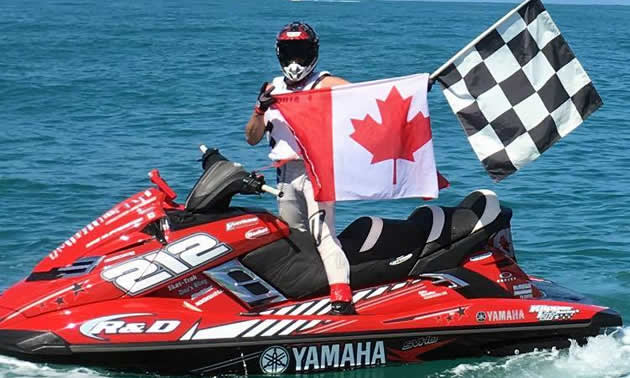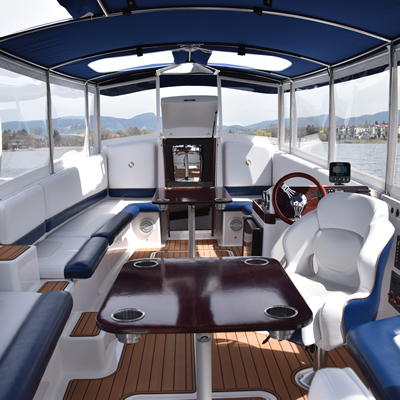Whether it’s motocross, snocross or, in this case, personal watercraft racing, crossing borders and travelling many miles in order to be competitive is a common theme among just about all pro racers living in Western Canada. It’s not impossible, however, for us Westerners to reach the top step in our chosen discipline.
Take Mike Klippenstein. Living in Fort McMurray, Alberta, he is landlocked by ice and snow for nearly seven months of the year—not ideal for a personal watercraft racer in need of practice. Yet, Klippenstein is one of the planet’s top PWC racers, having amassed 26 world titles and earning himself a spot in the International Jet Sports Boating Hall of Fame.
How does he do it?
“It’s challenging, but once you have the skill set, it’s just a matter of being conditioned and fit,” said Klippenstein. “Muscles have memories.”
That being said, Klippenstein has worked hard to get to where he is, often putting in a 50-hour work week in order to chase his dream. Sponsors are a big help as well, and he is backed by several major companies, including Yamaha.
Pooling his talents
Over the years, Klippenstein has developed the skills necessary to compete with the best in the world, often travelling overseas to places like Dubai, Abu Dhabi and Pattaya City in Thailand—which is where the prestigious King’s Cup takes place.
For his cross-training, Klippenstein rides dirt bikes and snowmobiles. When he’s not behind the bars, he’s in the Klipper Racing Mod Shop, wrenching on his race crafts and building boats for others.
“There’s not much couch time,” he said.
On top of that, Klippenstein has a seven-year-old son who is learning the PWC ropes. Although he won’t be racing for another few years, the young Klipper is already on his second Jet Ski.
“I leave his Jet Ski in Arizona and we go down there several times a year,” said Klippenstein. “He’s like a little rock star already.”
Evolution of the sport
Like anything, there have been changes in this sport over the years. Klippenstein spoke about the decline in racer entries coupled with having too many different race classes to fill.
“In the mid- to late-’80s, that’s when watercraft had so much momentum,” he said, “and they had 10 to 15 people making a living at it. They only had one or two classes, so that’s probably why it was so big back then.”
Remembering his first world finals, Klippenstein said it was an overwhelming experience.
“There were people sleeping in the backs of their trucks,” he said. “All the hotels were full. They had thousands of people in the grandstands.”
Advancements in technology have changed the cost of this sport. Before, he said, the boats were essentially motorized surfboards and now, they’re high tech and capable of reaching speeds of 120 kilometres per hour or more.
The good news is that Klippenstein is still seeing families getting involved, especially with the AquaX series he followed, and won, last year.
“I was watching the kids last weekend,” he said, “racing in the surf and these kids are like 10 or 11 years old and they were ripping through the surf and killin’ it.”

In May, Klippenstein won the Dana Point to Oceanside and Back Offshore National in Southern California. — Photo courtesy Mike Klippenstein
Canada’s constant contender
At 48 years old, Klippenstein could be called a seasoned racer, but he’s still a top contender and one of the best in the world. These days, however, he’s focused more on enjoying the camaraderie of the sport than dominating the field.
“It’s meeting the people,” he said.” (The sport) keeps you in shape. Keeps you young.”
And it goes to show that hard work and determination really do pay off.
Editor’s Note: Our interview with Mike Klippenstein took place before the Fort McMurray wildfire caused up to 90,000 to evacuate. It has been confirmed that Klippenstein and his family are OK, as is his home. Our hearts go out to everyone who has been affected.








Comments